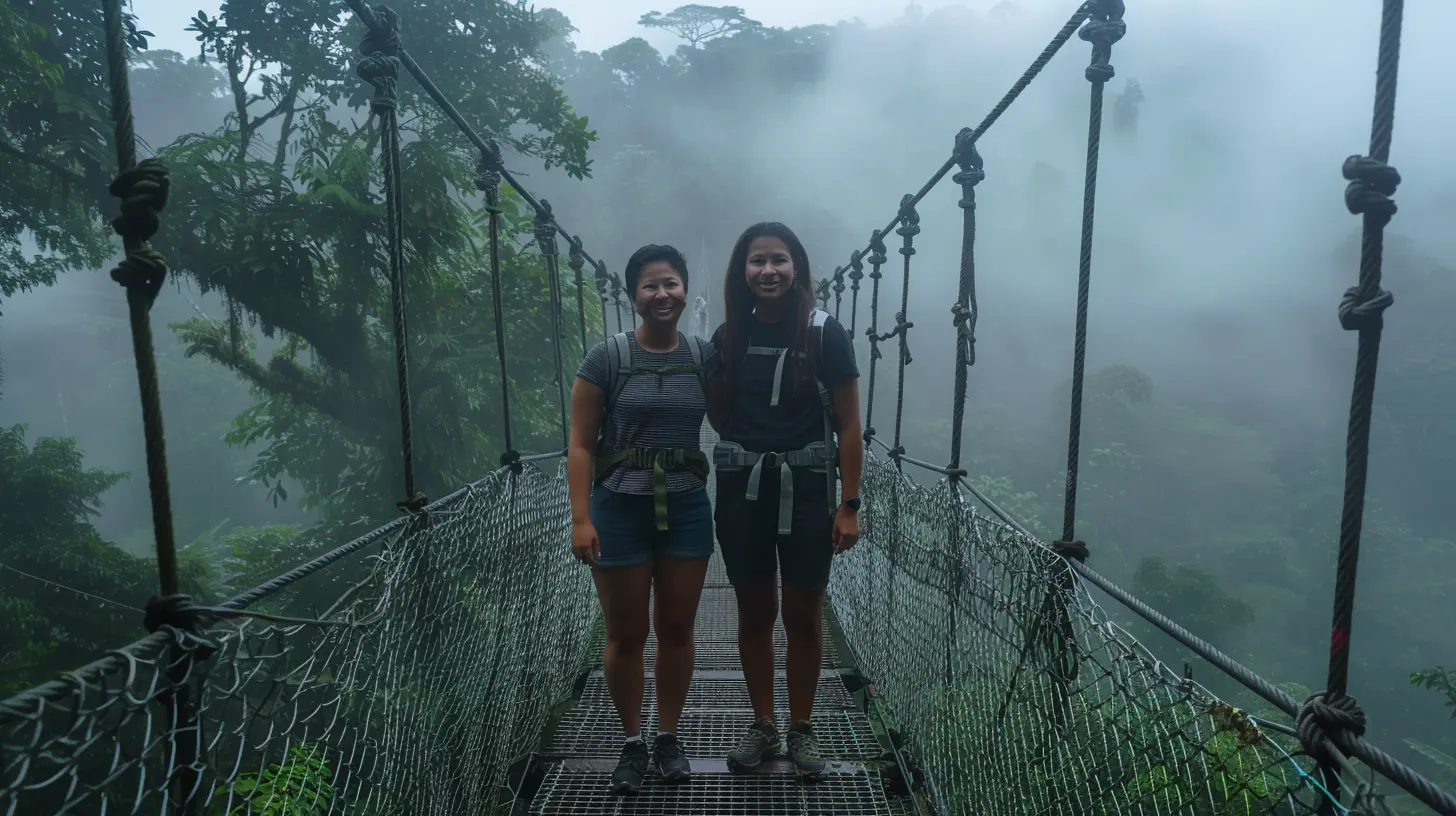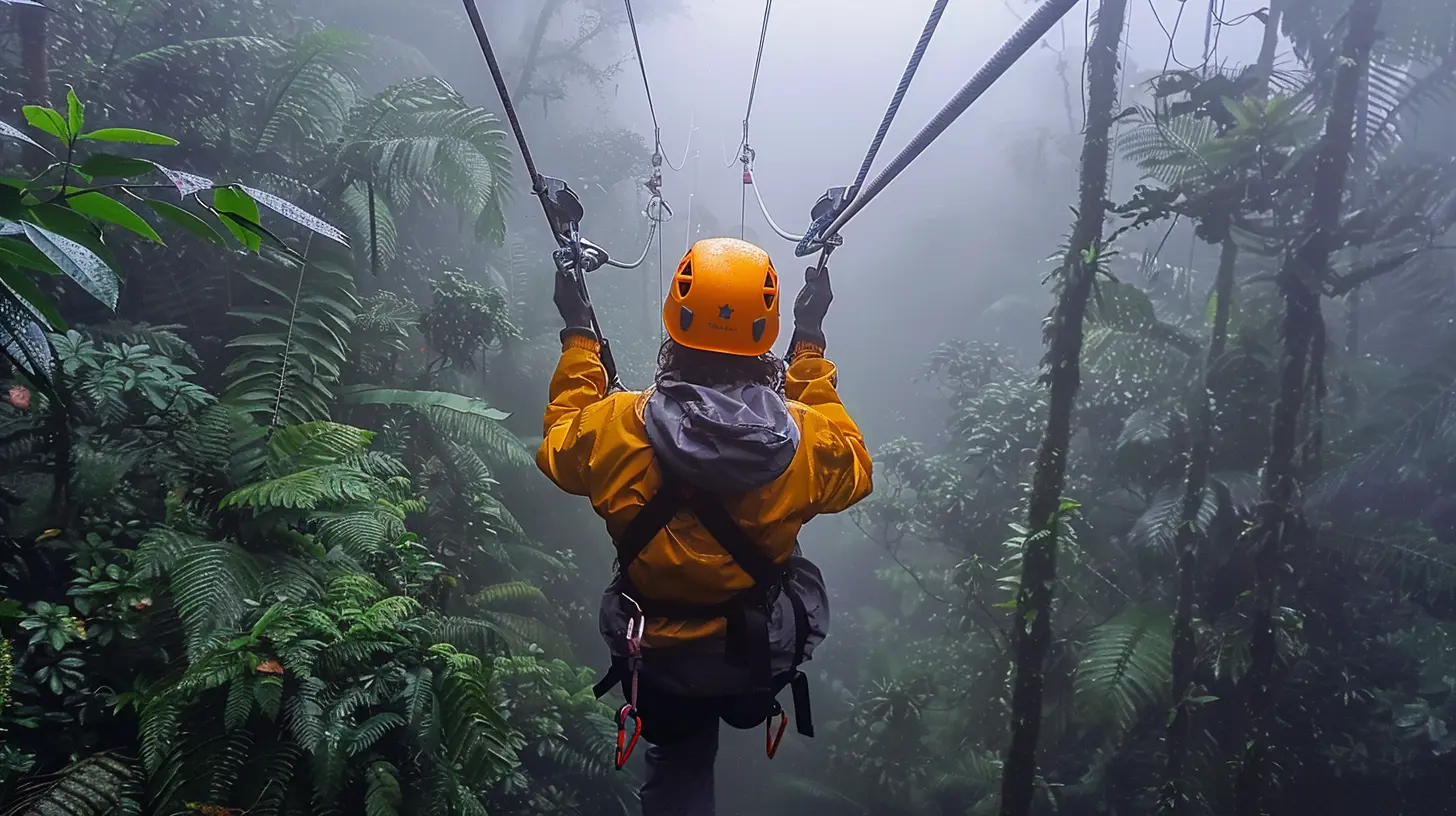Exploring the Cloud Forest: A Unique Rainforest Experience
9 November 2025
If you’re the kind of traveler who craves something a little out of the ordinary, something more mystical than your average tropical getaway, let me introduce you to the cloud forest. It's not just another rainforest—it’s like walking through the pages of a fantasy novel. Think misty trails, moss-covered trees, hidden creatures, and a vibe that feels otherworldly. Whether you're a nature lover, a photographer, or just someone looking for peace and fresh air, the cloud forest has got you covered.
Strap on your hiking boots, grab your camera, and let’s dive into what makes this magical ecosystem so special.
What Exactly Is a Cloud Forest?
Alright, let’s clear the fog (pun intended). A cloud forest, sometimes called a montane rainforest, is a tropical or subtropical forest that exists at high elevations—usually between 3,000 and 8,000 feet above sea level. Unlike regular rainforests, cloud forests are constantly blanketed in mist and low-hanging clouds. This creates a super-moist environment where moss, lichens, and ferns thrive.Ever felt like you’re walking inside a cloud? That’s exactly what it feels like here.
Where Can You Find These Mystical Forests?
Cloud forests aren't as common as tropical rainforests, but when you do find one, they’re absolutely mesmerizing. Some of the most popular cloud forest destinations include:- Monteverde, Costa Rica: Hands down, one of the most well-known. It's practically the poster child for cloud forests.
- Ecuador's Cloud Forests (Mindo, Bellavista): A birdwatcher’s paradise, brimming with exotic species.
- Cameron Highlands, Malaysia: A cooler and calmer retreat with lush trails and tea plantations nearby.
- Highlands of Peru and Colombia: Rich in biodiversity and culture.
- The Ethiopian Highlands: Less traveled but equally captivating.
Each forest has its own flavor, but they all share that surreal atmosphere you won’t find anywhere else.
Why the Cloud Forest Is a Must-See Ecosystem
So, what makes the cloud forest different from your typical Amazonian jungle? For starters, it’s all about the mood. This place doesn’t overwhelm you with heat or noise. Instead, it whispers. The perpetual mist dampens sounds, so it feels like the whole forest is holding its breath.1. A Biodiversity Hotspot
Cloud forests are teeming with life. Despite covering less than 1% of the planet’s forested areas, they are home to nearly 15% of the world’s plant species and thousands of unique animals.We're talking:
- Colorful birds like quetzals and toucans
- Amphibians that glow under UV light
- Orchids in every shape, color, and scent
- Insects and butterflies that look like they stepped out of a sci-fi movie
Every turn of the trail brings you face-to-face with something unexpected.
2. A Vital Water Source
These forests aren’t just beautiful—they’re essential. The constant cloud cover provides much-needed water to both plants and animals. In fact, they act like natural water towers, collecting mist and dripping it slowly into rivers and reservoirs. This helps sustain nearby communities and lowland ecosystems.Pretty cool, right? It’s nature being smart and efficient.
3. A Climate Regulator
Let’s talk climate change for a sec. Cloud forests act like carbon sinks, absorbing carbon dioxide and helping regulate temperature and moisture patterns. Without them, locales across the tropics could face serious water shortages and biodiversity loss.So yeah, your visit supports more than just your Instagram feed—it’s a nod to a better planet.
What to Do in a Cloud Forest (Spoiler: A Lot More Than You Think)
Whether you're an adventure junkie or a chill wanderer, there’s plenty to do up in the clouds.1. Hiking and Nature Walks
Honestly, just walking through a cloud forest is an experience. Trails wind under arching trees draped in moss, and the air smells sweet and earthy. Some trails are misty and mysterious, while others open up to panoramic views that’ll make you feel like you're floating above the world.Tip: Wake up early to catch the most dramatic mist—it’s like stepping into a dream.
2. Birdwatching
Bring binoculars. Or better yet, a camera with a zoom lens. Cloud forests are an avian wonderland. In places like Monteverde, you might spot the incredibly colorful resplendent quetzal or hummingbirds that dart through the fog like jewels with wings.Even if you're not a birder, the sight of these feathered creatures in the wild is unforgettable.
3. Zip Lining and Hanging Bridges
Looking for a bit of adrenaline? Many cloud forests offer zip-lining tours through the canopy. Imagine flying above the trees with the mist swirling below you. It’s part rollercoaster, part nature documentary.If you prefer to keep your feet on (or just above) the ground, try the hanging bridges. They let you walk among the treetops, giving you a new perspective of the forest.
4. Night Tours
Here's something most people miss: cloud forests come alive at night. Guided night tours can show you glowing fungi, nocturnal frogs, and sneaky mammals you’d never see in daylight. Just don’t forget your flashlight—and maybe someone to hold your hand if things get a little spooky.Best Time to Visit a Cloud Forest
There’s no bad time, honestly. But if you're picky about weather, here’s the scoop:- Dry Season (typically December to April): Easier hiking, clearer skies, more tourists
- Wet Season (May to November): Fewer crowds, more vibrant greenery, and yes—more rain
Pro tip: Even in the dry season, expect occasional drizzles and cool, damp air. Layer up and pack a rain jacket. This isn’t a beach vacation—it’s more like a cozy forest hug.
Tips for Your Trip to the Cloud Forest
Let’s get practical for a sec. You don’t want to arrive unprepared, especially when you’re heading somewhere so unique.1. Dress Smart
Comfort is key. Go for moisture-wicking clothes, hiking boots with grip, and don’t skip the rain gear. A warm layer is always a good idea, especially early in the morning or after sunset.2. Bring Binoculars and a Good Camera
Trust me—you’ll want to capture those misty landscapes and elusive wildlife. Your phone camera might not cut it once you're deep in the forest.3. Hire a Guide
Yes, you can wander solo, but having a local guide gives you a deeper understanding of what you’re seeing. They’ll point out animals you would've missed and share stories that bring the forest to life.4. Respect the Environment
Stick to trails, don’t feed the animals, and leave no trace. The cloud forest is fragile, and it's our job to keep it magical for future generations.The Soul-Soothing Power of the Cloud Forest
Honestly, there’s something deeply calming about being in a cloud forest. Maybe it’s the filtered light or the hushed silence—or maybe it’s just being reminded that the world still has hidden, wild places.You’ll come back refreshed, inspired, and maybe a bit changed. There's a kind of gentle magic in the moisture that seeps into your bones, reminding you to slow down and listen.
Because in the cloud forest, everything whispers, nothing shouts. And sometimes, that’s exactly what we need.
Make It Happen: How to Plan Your Cloud Forest Adventure
Thinking of taking the plunge (or the hike)? Good call! Here’s how to make your dream trip happen:- Choose your destination based on what you want—wildlife, scenery, activities, or a specific country.
- Book eco-lodges or forest cabins if you want an immersive experience. Waking up to birdsong in the mist? Yes, please.
- Plan a few guided tours to get the most out of your visit.
- Allow at least 2–3 days to really soak it in. Trust me, a day trip doesn’t do it justice.
Conclusion: Is the Cloud Forest Worth It?
One hundred percent—yes. The cloud forest isn’t just a place; it’s a feeling. It’s that rare mix of adventure and tranquility, mystery and clarity. Whether you’re chasing birds, zip-lining through foggy canopies, or simply standing in silence beneath dripping leaves, it gets under your skin in the best way.So, are you ready to wander through the clouds?
all images in this post were generated using AI tools
Category:
Rainforest ToursAuthor:

Claire Franklin
Discussion
rate this article
1 comments
Uma McEvoy
Fantastic article! The Cloud Forest's unique biodiversity and stunning landscapes truly offer an unforgettable experience. Your insights on trails and local wildlife are invaluable for future explorers. Thank you!
November 12, 2025 at 4:04 PM

Claire Franklin
Thank you for your kind words! I'm glad you found the article helpful for future explorations of the Cloud Forest. Happy adventuring!


